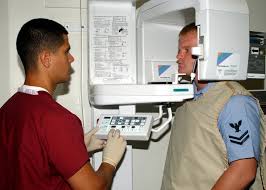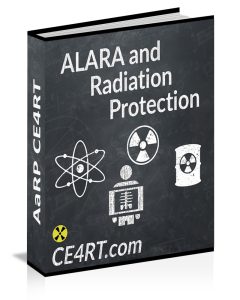Occupational Radiation Exposure Limit: Are You Safe?

Radiologic technologists and other healthcare workers are exposed to X-rays in the course of their work duties. There are certain occupational radiation exposure limits for X-ray techs. Remaining within these limits is essential for safety in the workplace. Read on to refresh your knowledge on the key safety limits with regards to occupational radiation exposure.
Occupational Radiation Exposure Safety Limits
The regulations regarding occupational radiation exposure limit of workers vary in different parts of the world. For the most part, they comprise of recommendations from the International Commission on Radiological Protection (ICRP) and other similar groups. The annual limit for radiation exposure in the United States is outlined in the Code of Federal Regulations and similar state regulations.
With regard to radiographers not specializing in radioactive materials, the code defines the annual exposure limit as follows: Whichever is more of the following:
- Total effective dose equivalent 0.05 Sv (equivalent to 5 rems) or,
- Deep-dose equivalent (delivered to any organ besides the eye) 50 rems or 0.5 Sv
For the eye, the annual limit is 15 rems or 0.15 Sv. For the skin and extremities, the annual limit is 50 rems or 0.5 Sv.
Dose Terminology
It is important to understand certain terminologies in terms of occupational radiation exposure limit. The external dose delivered to an extremity or the whole body, obtained from a source of radiation, is referred to as the shallow-dose equivalent. It is calculated at 0.007 cm deep, averaged over a 10 cm2 area.
On the other hand, the lens dose equivalent is described as the radiation delivered from an external source to the eye. This is calculated at 0.3 cm deep.
The external dose delivered to the entire body is known as the deep-dose equivalent. It is calculated at 1 cm deep. Lastly, the total effective dose equivalent is radiation delivered to the entire body.
Annual Limits for Non-Radiation Workers
In addition to the occupational radiation exposure limit, the yearly dose limit applicable to the general public has been defined. This is also applicable to healthcare workers who are non-radiation workers. This dose is limited to 2 percent of the permitted annual occupational dose or up to 0.1 rem/year whole body dose of industrial ionizing radiation. This is in addition to the naturally occurring background radiation that everyone is exposed to, which is to the order of 0.3 rem/year, as well as man-made radiation exposure such as medical X-rays, which is to the order of 0.05 rem/year.
X-ray CE for Radiologic Technicians
We offer a range of online courses for X-ray techs to complete registration requirements for ARRT® and other registries. Please visit our e-courses and tests page. Our online courses are an easy and convenient way to earn the 24 CE X-ray credits required every two years.
Get more information about arrt® continuing education credits and radiography continuing education
